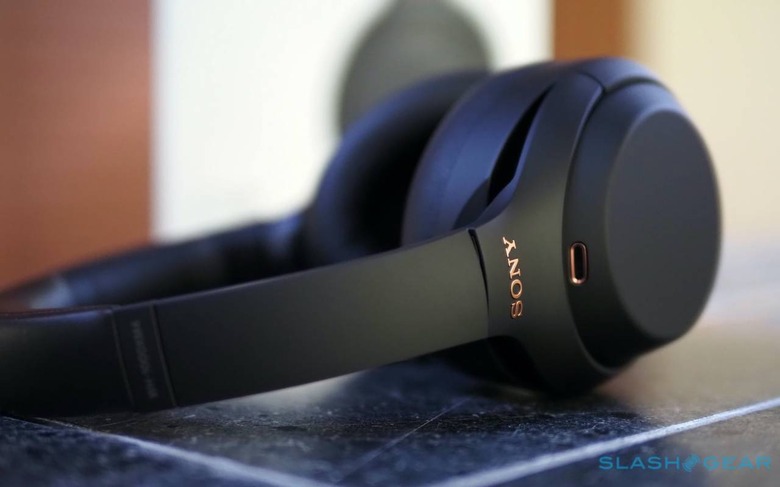The Difference Between Noise-Canceling And Noise-Isolating Headphones
When you're searching for a new pair of headphones, you'll find endless lists of features and buzzwords that can make it hard to know what you should be looking out for. One feature that many people are looking for is some degree of sound reduction so that they can listen to music or podcasts without being disturbed by noise around them. But you'll find two very different types of sound reduction offered: noise-canceling and noise-isolating. We'll explain the difference so you can pick the right headphones for you.
The more common and more affordable option is noise-isolating headphones. These are designed to cup around your ear or to fit into your ear canal in a way that blocks out outside sounds.
This is called passive noise cancelation because it doesn't use any software. It just means that the hardware of the headphones has been designed to keep out sound, such as using squishy ear cups that fit to the shape of your head. The seal between the headphones and your head helps to reduce the amount of sound which makes it to your ears.
This will help to reduce some of the sounds around you, but it won't give you total quiet. It's better than nothing when you're in a noisy environment but if you're looking to really focus and tune out background sounds, then you'll need the more complex option, which is noise canceling.
What are noise-canceling headphones?
Noise-canceling headphones are those that use specific software to block out outside sounds. They're also called ANC, or active noise canceling, and typically include a microphone on the headphones. This mic picks up surrounding sounds and then software within the headphones uses that information to try and tune it out.
Noise-canceling technology won't guarantee you complete silence — you'll still hear loud sounds like drilling happening nearby — but it's remarkably effective at tuning out the background chatter of an office or the hum of airplane engines.
One disadvantage of noise-canceling technology is that it will drain the battery of wireless headphones more quickly, as it requires more resources to run. However, many newer headphones have an option to turn noise-canceling software off, so if your battery is running low, you can switch it off and keep your headphones going longer.
Another feature some newer headphones have is an ambient mode where you can temporarily amplify outside sounds rather than decreasing them. This is handy when you're listening to an announcement at an airport, for example, or having a quick conversation with a colleague.
Finally, one issue to consider is that as noise-canceling headphones have more complex hardware and software than other headphones, they tend to be more expensive. But for many people, it's worth spending a bit more on headphones that help them to focus or relax.
Some of the best noise-canceling software available is from brands like Sony, with its popular WH-1000XM4 headphones, or Bose, with its QuietComfort line.

